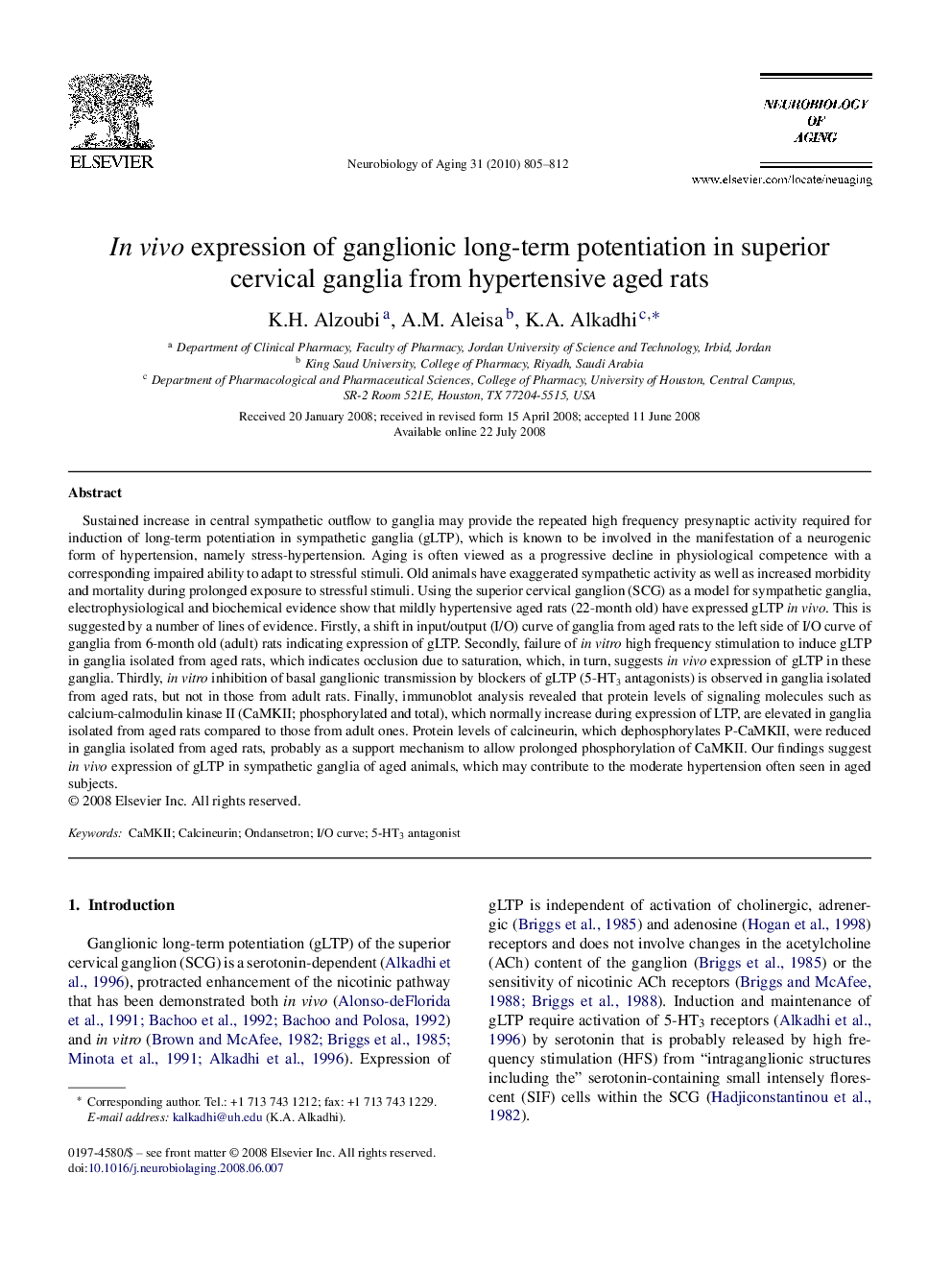| Article ID | Journal | Published Year | Pages | File Type |
|---|---|---|---|---|
| 6810802 | Neurobiology of Aging | 2010 | 8 Pages |
Abstract
Sustained increase in central sympathetic outflow to ganglia may provide the repeated high frequency presynaptic activity required for induction of long-term potentiation in sympathetic ganglia (gLTP), which is known to be involved in the manifestation of a neurogenic form of hypertension, namely stress-hypertension. Aging is often viewed as a progressive decline in physiological competence with a corresponding impaired ability to adapt to stressful stimuli. Old animals have exaggerated sympathetic activity as well as increased morbidity and mortality during prolonged exposure to stressful stimuli. Using the superior cervical ganglion (SCG) as a model for sympathetic ganglia, electrophysiological and biochemical evidence show that mildly hypertensive aged rats (22-month old) have expressed gLTP in vivo. This is suggested by a number of lines of evidence. Firstly, a shift in input/output (I/O) curve of ganglia from aged rats to the left side of I/O curve of ganglia from 6-month old (adult) rats indicating expression of gLTP. Secondly, failure of in vitro high frequency stimulation to induce gLTP in ganglia isolated from aged rats, which indicates occlusion due to saturation, which, in turn, suggests in vivo expression of gLTP in these ganglia. Thirdly, in vitro inhibition of basal ganglionic transmission by blockers of gLTP (5-HT3 antagonists) is observed in ganglia isolated from aged rats, but not in those from adult rats. Finally, immunoblot analysis revealed that protein levels of signaling molecules such as calcium-calmodulin kinase II (CaMKII; phosphorylated and total), which normally increase during expression of LTP, are elevated in ganglia isolated from aged rats compared to those from adult ones. Protein levels of calcineurin, which dephosphorylates P-CaMKII, were reduced in ganglia isolated from aged rats, probably as a support mechanism to allow prolonged phosphorylation of CaMKII. Our findings suggest in vivo expression of gLTP in sympathetic ganglia of aged animals, which may contribute to the moderate hypertension often seen in aged subjects.
Related Topics
Life Sciences
Biochemistry, Genetics and Molecular Biology
Ageing
Authors
K.H. Alzoubi, A.M. Aleisa, K.A. Alkadhi,
